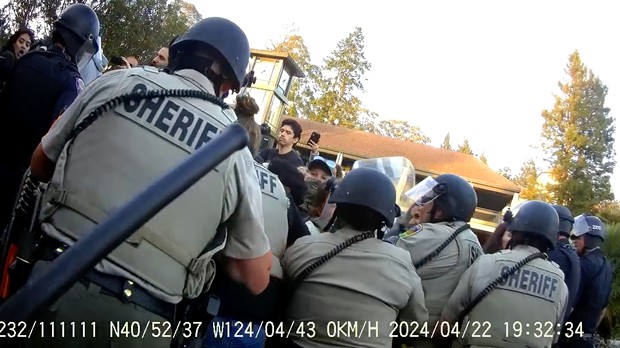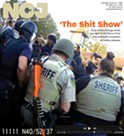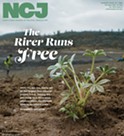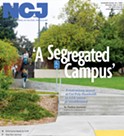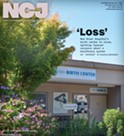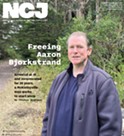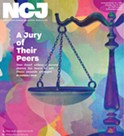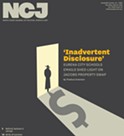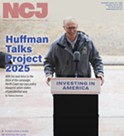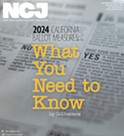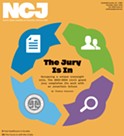'The Shit Show'
Body camera footage sheds new light on first hours of Cal Poly Humboldt occupationBody camera footage sheds new light on first hours of Cal Poly Humboldt occupation
By Thadeus Greenson [email protected] @ThadeusGreenson[
{
"name": "Top Stories Video Pair",
"insertPoint": "7",
"component": "17087298",
"parentWrapperClass": "fdn-ads-inline-content-block",
"requiredCountToDisplay": "1"
}
]
Within about 25 minutes of pro-Palestinian demonstrators entering Cal Poly Humboldt's Siemens Hall on April 22, a decision had been made.
"I want them out of the building," Chief of Staff Mark Johnson tells then interim Police Chief Peter Cress, moments after he and two other officers arrived on scene. When Cress returns less than 10 minutes later to inform Johnson demonstrators declined what he described to them as "an opportunity" to move their protest onto the university quad, where it would have been within the university's Time, Place and Manner policy, Johnson is blunt in his assessment.
"So, they've elected for the shit show?" he asks. "OK. They can choose the easy way or the hard way."
These brief exchanges — captured amid more than nine hours of body camera footage from the first officers on scene that day released to the Journal in response to a California Public Records Act request — illustrate the decision to clear the building, through mass arrests, if necessary, came quickly. And while messaging from CPH administration has cast the decision as a response to an increasingly dangerous situation, the footage clearly shows it came before any widespread vandalism had occurred within the building, and before protesters barricaded the building's entrances and exits.
The distinction is a potentially important one, as protesters told the Journal in the spring their goal had been a soft occupation of the building — one that held the space to bring awareness to the humanitarian crisis in Gaza brought by the Israel-Hamas war, but one that allowed classes and administrative operations to continue. Administrators, meanwhile, have insisted the demonstration was not "a peaceful protest," but "lawless behavior that was premeditated."
What's clear in retrospect is the police response to Siemens Hall that day — and the violent confrontation that came when officers attempted to clear the building only to be pushed back by protesters — did not bring the swift end to the situation that administrators had envisioned. Rather, when police left the scene some six hours after they'd arrived, the occupation was entrenched, with the entrances to Siemens Hall blockaded and vandalism inside the building widespread — a significant portion of it decrying the police use of force that had just occurred. The university estimates protesters caused $1.2 million in damage, though it has not provided an explanation or documentation of that tally, despite numerous requests. The occupation would last another eight days and draw international media attention, ultimately ending when administrators — having already taken the unprecedented step of canceling in-person instruction and instituting a hard closure that threatened anyone who set foot on campus with arrest — summoned hundreds of police officers from throughout Northern California to forcefully clear Siemens Hall and the surrounding area.
The footage released in response to the Journal's request offers the most detailed moment-by-moment account of the protest's infancy and how police and administrators responded. It paints a picture of a small university police department ill-prepared to deal with such a situation, and documents how police and administrative decisions seem to have diverged from widely accepted best practices for policing protest activity.
But the footage is by no means comprehensive. Of the six university police officers on scene that day, the Journal only obtained body camera footage from four, none of which capture the entirety of their deployment. A university public records specialist told the Journal the department's vendor was unable to recover footage from two of the officers and two other cameras had "technical issues," while batteries died on yet two others partway through the incident. Footage from Cress' camera, meanwhile, included an unexplained gap of more than two hours. (The university said it would release that outstanding footage to the Journal by Sept. 30 but had still failed to do so as the paper went to press Oct. 1.)
Nonetheless, what's been released offers the fullest picture to date of the situation officers faced when they arrived at Siemens Hall that day and how they responded.
Spencer Fomby, a retired police captain with 22 years of experience and who now serves as the Public Order Section Chair for the National Tactical Officers Association, spent years helping the Berkeley Police Department respond to demonstrations, like those in the wake of the 2009 police shooting of Oscar Grant, and incorporating de-escalation principles into the department's critical incident and public order responses. In an interview with the Journal, Fomby says campus protests are inherently complex and dynamic, but offered some key best practices.
First off, Fomby says occupying a building is not an act of protected free speech, so administrators certainly have the authority to threaten protesters with arrest if they refuse to leave. But he notes communication is essential.
"You have to attempt to communicate with the protest group, letting them know they're violating certain rules and potentially laws, and then telling them there's a consequence for their actions," he says, adding a uniformed officer is generally not the best choice to engage in this communication, as it can be seen as an escalating factor or make the situation confrontational.
In the footage released to the Journal, Cress is the only person who has this type of conversation with demonstrators at the protest's outset, and he never fully articulates the potential consequences if they refuse to leave the building. (They reportedly only learn of plans to arrest them sometime later when they're relayed by a local reporter shortly before police in riot gear begin staging outside the building's glass doors.)
Fomby says he also learned through firsthand experience the importance of making sure decision makers fully understand the potential outcomes of their directives. For example, he says, someone giving an order to clear protesters from a building should be made to understand that if those protesters resist arrest, officers will use force, which could have bad optics and escalate tensions.
If such a conversation occurred at CPH, it's not captured on camera.
Finally, Fomby says it's important to understand the emotionality of these situations.
"It's such an emotionally charged event that people who have never been involved in criminal activity or with police will become resistive, just because they're so passionate," he says, adding that, as such, when there's "no real threat to the building, nobody is in danger," it's best to slow things down and communicate.
At CPH, after the initial decision was made to clear the building, the body camera footage does not give any indication that any efforts to re-engage in communication with protesters was made for hours, not until well after police had tried — and failed — to forcefully remove them.
The principles mentioned by Fomby align closely with those detailed in a variety of white papers and guidelines issued on policing protests by the likes of Police1, the RAND Corporation and the U.S. Department of Justice. In addition to guidance on broad strategy, these publications also offer detailed suggestions, many of which do not appear to have been followed in the Siemens Hall response. For example, the publications suggest that officers in tactical gear — like helmets and shields — should stage where protesters cannot see them because the mere sight of them can escalate tensions.
This did not happen at CPH, where the sight of officers in tactical gear appears to have escalated tensions — leading to the barricading of doors and an intensifying of protest activity — to the point Cress at one point tells sheriff's deputies in vests and helmets standing directly in front of the entrance to Siemens Hall, "Your presence has changed things considerably."
CPH Interim President Michael Spagna sent a campuswide email Sept. 11 reporting, in part, that the spring protests were the subject of an after-action review "of how the events in April were handled and what could have been done differently," details of which will be shared with the campus community "in the near future." The Journal has requested copies of any documents generated by the review, and the university has indicated it will respond by Oct. 31.
Below, find a timeline of the first six hours of the protest that eventually shuttered Cal Poly Humboldt last spring, compiled entirely from video footage of the incident, as well as the initial police calls for service.
4:25 p.m. — Presidential aide Paula Petersen calls the University Police Department's non-emergency line to report there's "some little protest, little something going on" but "we're fine and safe." Petersen says the protesters are disrupting the university's Time, Place and Manner Policy and requests an officer respond. A few minutes later, dispatch calls back to ask Petersen how many people are involved in the demonstration and she says she doesn't know. "We heard them coming and we just locked and shut the shades so as not to engage," says Petersen, who then calls back again a short time later to report protesters have begun erecting tents in the hallway.
more from the author
-
State Sues St. Joseph Hospital
Lawsuit alleges hospital denied abortion services for religious reasons, putting woman's life in danger
- Oct 3, 2024
-
Conflicted RCEA Board Passes on Nuclear Power
- Oct 1, 2024
-
EPD Investigating Fatal Crash
- Sep 27, 2024
- More »
Latest in News
Readers also liked…
-
'To Celebrate Our Sovereignty'
Yurok Tribe to host gathering honoring 'ultimate river warrior' on the anniversary of the U.S. Supreme Court ruling that changed everything
- Jun 8, 2023
-
Pride in Full Stride
- Jun 29, 2023
